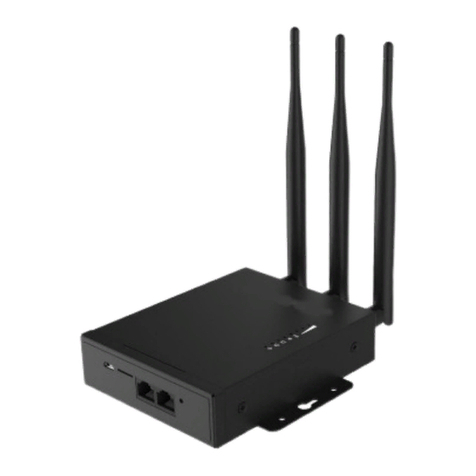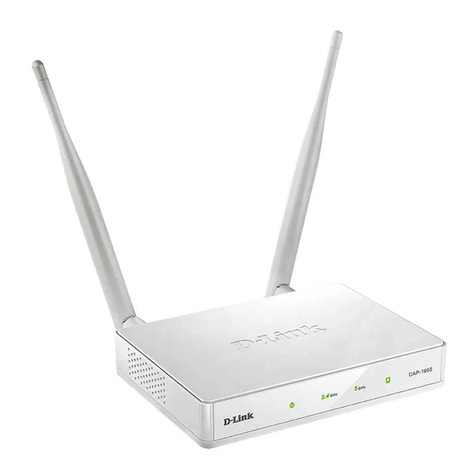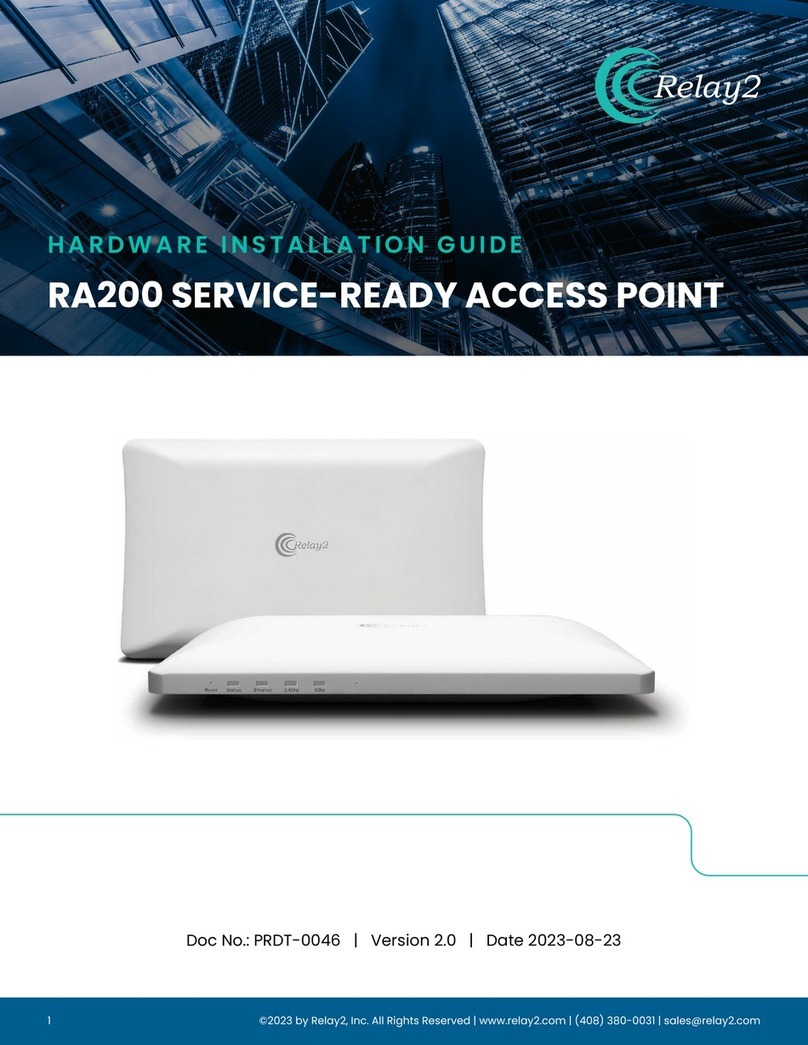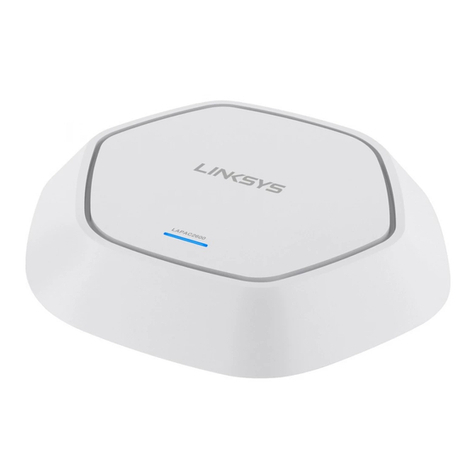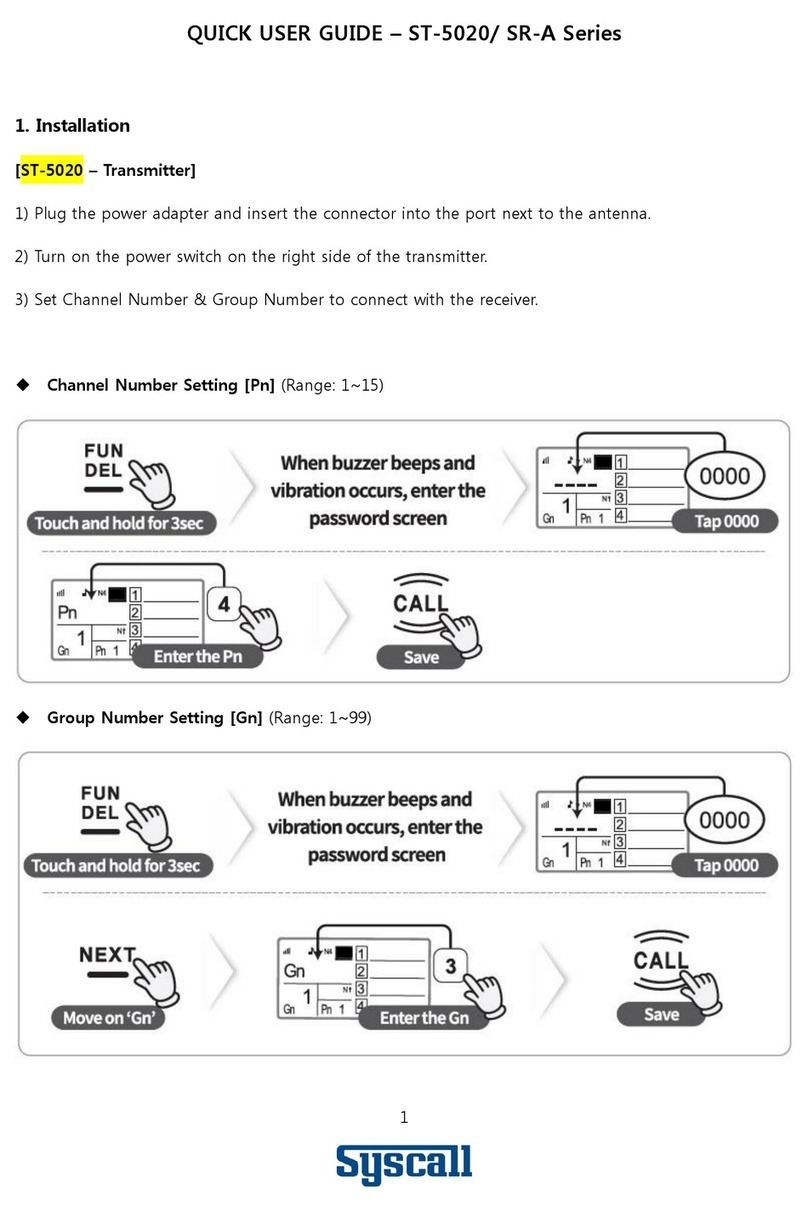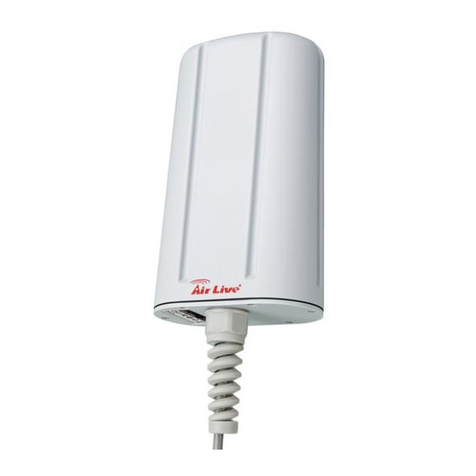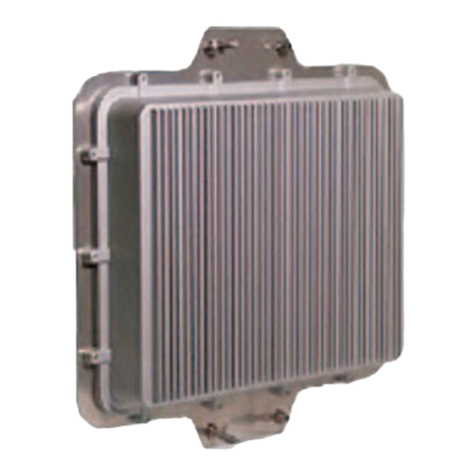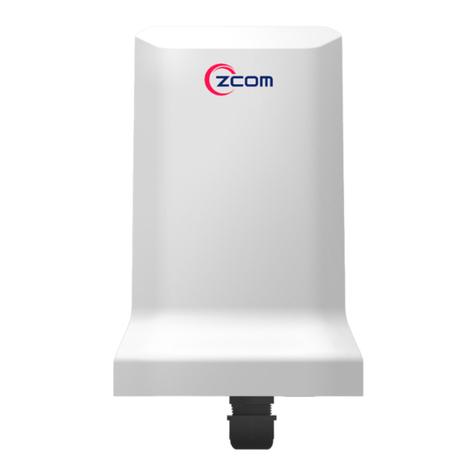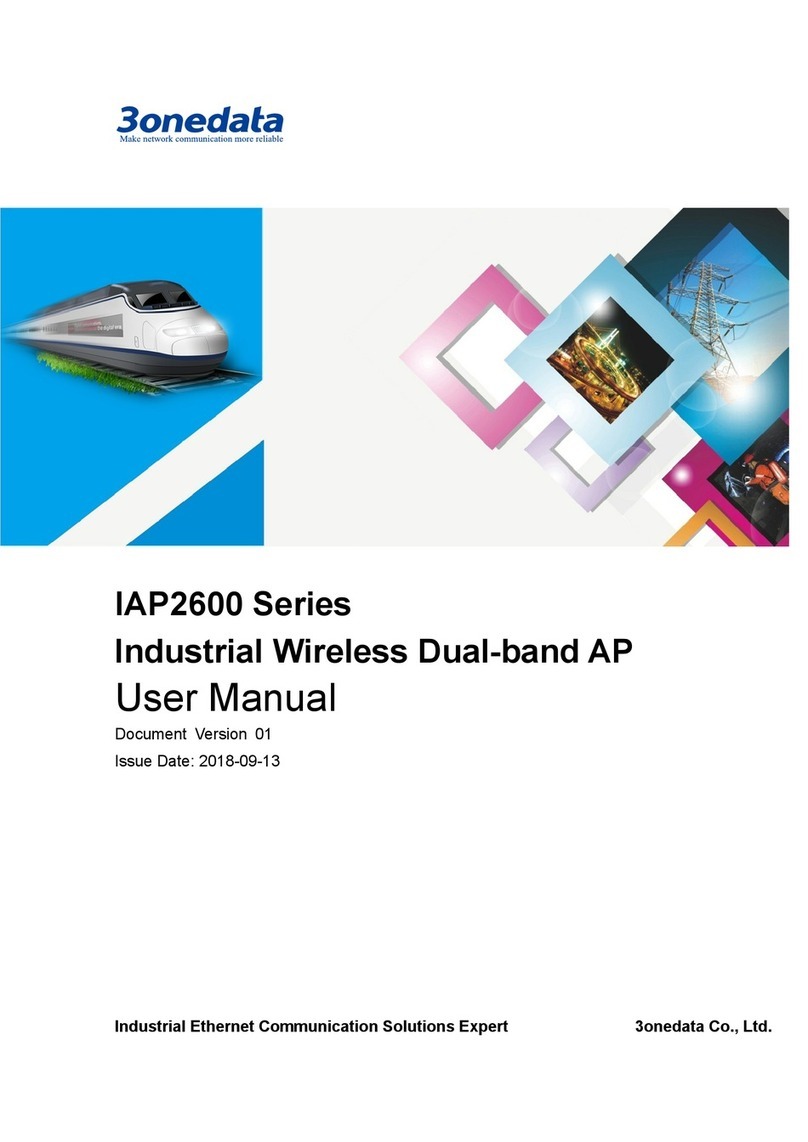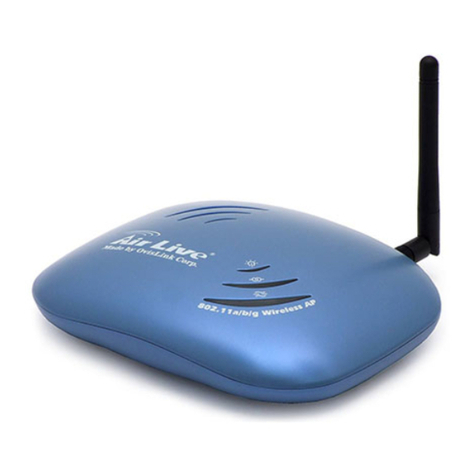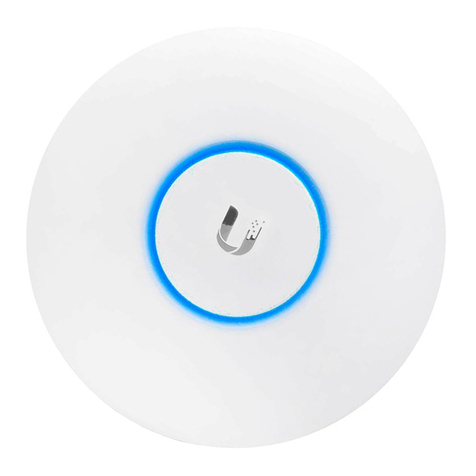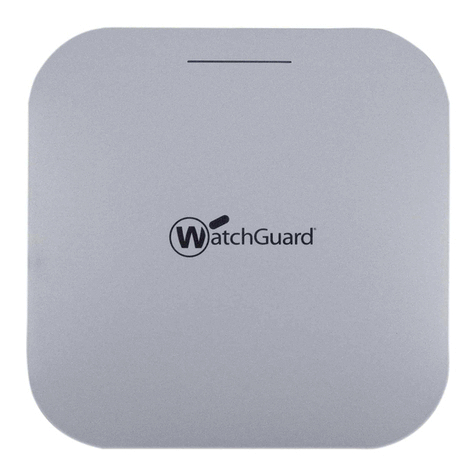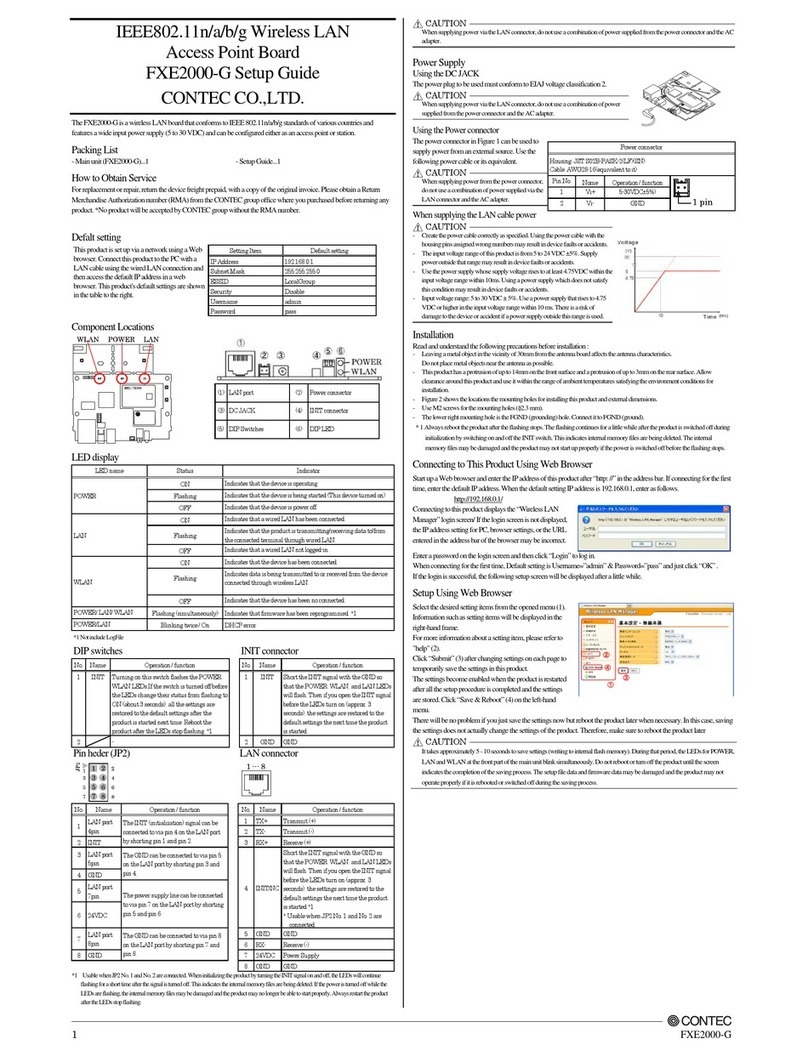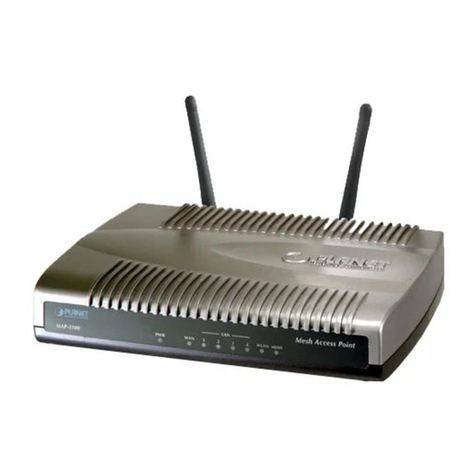Proware M-WA701ND User manual

M-WA701ND
150Mbps Wireless Lite-N Access Point
Rev: 1.0.0
1910020233

COPYRIGHT & TRADEMARKS
Specifications are subject to change without notice. is a registered trademark
of PROWARE TECHNOLOGIES CO., LTD. Other brands and product names are trademarks or
registered trademarks of their respective holders.
No part of the specifications may be reproduced in any form or by any means or used to make any
derivative such as translation, transformation, or adaptation without permission from PROWARE
TECHNOLOGIES CO., LTD. Copyright © 2009 PROWARE TECHNOLOGIES CO., LTD.
All rights reserved.
http://www.proware.com.cn

FCC STATEMENT
This equipment has been tested and found to comply with the limits for a Class B digital device,
pursuant to part 15 of the FCC Rules. These limits are designed to provide reasonable protection
against harmful interference in a residential installation. This equipment generates, uses and can
radiate radio frequency energy and, if not installed and used in accordance with the instructions,
may cause harmful interference to radio communications. However, there is no guarantee that
interference will not occur in a particular installation. If this equipment does cause harmful
interference to radio or television reception, which can be determined by turning the equipment off
and on, the user is encouraged to try to correct the interference by one or more of the following
measures:
•Reorient or relocate the receiving antenna.
•Increase the separation between the equipment and receiver.
•Connect the equipment into an outlet on a circuit different from that to which the receiver
is connected.
•Consult the dealer or an experienced radio/ TV technician for help.
This device complies with part 15 of the FCC Rules. Operation is subject to the following two
conditions:
1) This device may not cause harmful interference.
2) This device must accept any interference received, including interference that may cause
undesired operation.
Any changes or modifications not expressly approved by the party responsible for compliance
could void the user’s authority to operate the equipment.
FCC RF Radiation Exposure Statement
This equipment complies with FCC RF radiation exposure limits set forth for an uncontrolled
environment. This device and its antenna must not be co-located or operating in conjunction with
any other antenna or transmitter.
“To comply with FCC RF exposure compliance requirements, this grant is applicable to only
Mobile Configurations. The antennas used for this transmitter must be installed to provide a
separation distance of at least 20 cm from all persons and must not be co-located or operating in
conjunction with any other antenna or transmitter.”
CE Mark Warning
This is a class B product. In a domestic environment, this product may cause radio interference, in
which case the user may be required to take adequate measures.

National restrictions
This device is intended for home and office use in all EU countries (and other countries following
the EU directive 1999/5/EC) without any limitation except for the countries mentioned below:
Country Restriction Reason/remark
Bulgaria None General authorization required for outdoor use and
public service
France
Outdoor use limited to 10
mW e.i.r.p. within the band
2454-2483.5 MHz
Military Radiolocation use. Refarming of the 2.4 GHz
band has been ongoing in recent years to allow current
relaxed regulation. Full implementation planned 2012
Italy None If used outside of own premises, general authorization is
required
Luxembourg None General authorization required for network and service
supply(not for spectrum)
Norway Implemented This subsection does not apply for the geographical area
within a radius of 20 km from the centre of Ny-Ålesund
Russian Federation None Only for indoor applications
Note: Please don’t use the product outdoors in France.

CONTENTS
Package Contents....................................................................................................1
Conventions .............................................................................................................1
Chapter 1 Introduction...........................................................................................2
1.1 Product Overview.............................................................................................. 2
1.2 Main Features ................................................................................................... 3
1.3 Appearance....................................................................................................... 4
1.3.1 The Front Panel.................................................................................................4
1.3.2 The Rear Panel..................................................................................................5
Chapter 2 Hardware Installation ...........................................................................6
2.1 Before You Begin.............................................................................................. 6
2.2 Basic Requirements.......................................................................................... 6
2.3 Connecting the Device...................................................................................... 6
Chapter 3 Configure the PC .................................................................................. 8
Chapter 4 Configure the Device.......................................................................... 12
4.1 Login ............................................................................................................... 12
4.2 Status.............................................................................................................. 13
4.3 WPS................................................................................................................ 14
4.4 Network........................................................................................................... 20
4.5 Wireless .......................................................................................................... 21
4.5.1 Wireless Settings.............................................................................................21
4.5.2 Wireless Security.............................................................................................29
4.5.3 Wireless MAC Filtering ....................................................................................41
4.5.4 Wireless Advanced..........................................................................................43
4.5.5 Throughput Monitor .........................................................................................44
4.5.6 Wireless Statistics............................................................................................45
4.6 DHCP.............................................................................................................. 46
4.6.1 DHCP Settings.................................................................................................47
4.6.2 DHCP Clients List............................................................................................48
4.6.3 Address Reservation .......................................................................................48
4.7 System Tools .................................................................................................. 49
4.7.1 SNMP ..............................................................................................................50
4.7.2 Diagnostic ........................................................................................................51
4.7.3 Firmware Upgrade...........................................................................................52
4.7.4 Factory Defaults...............................................................................................53
4.7.5 Backup & Restore............................................................................................54

4.7.6 Ping Watch Dog...............................................................................................54
4.7.7 Reboot .............................................................................................................55
4.7.8 Password.........................................................................................................56
4.7.9 System Log......................................................................................................56
Appendix A: Application Example........................................................................ 58
Appendix B: Factory Defaults...............................................................................61
Appendix C: Troubleshooting...............................................................................62
Appendix D: Specifications...................................................................................63
Appendix E: Glossary............................................................................................64

1
Package Contents
The following items should be found in your package:
¾One M-WA701ND 150Mbps Wireless Lite-N Access Point
¾One DC power Adapter for M-WA701ND 150Mbps Wireless Lite-N Access Point
¾Quick Installation Guide
¾Csource CD, including:
zThis User Guide
zOther Helpful Information
)Note:
Make sure that the package contains the above items. If any of the listed items are damaged or
missing, please contact with your distributor.
Conventions
The AP or M-WA701ND, or device mentioned in this User guide stands for M-WA701ND 150Mbps
Wireless Lite-N Access Point without any explanations.
Parameters provided in the pictures are just references for setting up the product, which may differ
from the actual situation. You can set the parameters according to your demand.

Error! AutoText entry not defined. Error! AutoText entry not defined. User Guide
2
Chapter 1 Introduction
Thank you for choosing the M-WA701ND 150Mbps Wireless Lite-N Access Point.
1.1 Product Overview
The M-WA701ND 150Mbps Wireless Lite-N Access Point is dedicated to Small Office/Home
Office (SOHO) wireless network solutions. It allows for greater range and mobility within your
wireless network while also allowing you to connect the wireless devices to a wired environment.
Increased mobility and the absence of cabling will be beneficial for your network.
With using IEEE 802.11n wireless technology, your device can transmit wireless data at the rate of
up to 150Mbps. With multiple protection measures, including SSID broadcast control and wireless
LAN 64/128/152-bit WEP encryption, WiFi protected Access (WPA2- PSK, WPA- PSK), as well as
advanced Firewall protections, the M-WA701ND 150Mbps Wireless Lite-N Access Point delivers
complete data privacy.
It supports an easy, web-based setup for installation and management. Even though you may not
be familiar with the Access Point, you can easily configure it with the help of this Guide. Before
installing the AP, please look through this Guide to get the full information of the M-WA701ND
150Mbps Wireless Lite-N Access Point.

Error! AutoText entry not defined. Error! AutoText entry not defined. User Guide
3
1.2 Main Features
Features Benefits
Make use of IEEE 802.11n wireless technology Allows your device to transmit wireless data at
the rate of up to 150Mbps
Provides multiple encryption security Types
including: 64/128/152-bit WEP WPA/WPA2
WPA-PSK/WPA2-PSK
Secures your data while the data packets are
being transmitted
Supports Built-in DHCP server Supports dynamic IP address distributing
Supports MAC address filtering Allows you to control the access rights of the
wireless stations, depending on the stations'
MAC addresses
Supports multiple operating modes including:
zAccess Point
Makes the AP an ideal solution for your wireless
local area network
You can create a wireless local area network
zMulti-SSID Allows the wireless adapter to access to
different LANs appropriate to your needs by
connecting to different SSID
zClient Wirelessly connects Ethernet devices
zRepeater(Universal Repeater)Relays signal between its stations and the root
AP for greater wireless range
zBridge (Point to Point, Point to
Multi-point)
Bridges the AP and another AP also in bridge
mode to connect two or more wired LANs
Supports Firmware Upgrade You can easily upgrade the firmware to the
latest version through the web-based
management page
Supports Remote and Web management Allows you to manage your wireless LAN easily
through the web-based management page,
while the management by remote computer is
also available

Error! AutoText entry not defined. Error! AutoText entry not defined. User Guide
4
1.3 Appearance
1.3.1 The Front Panel
Figure 1-1
The front panel of the M-WA701ND consists of several LED indicators, which is designed to
indicate connections. View from left to right, Table 1-1 describes the LEDs on the front panel of the
device.
LED Explanation
Name Status Indication
Off No Power
Power On Power on
Off The device has a system error
On The device is initialising
System
Flashing The device is working properly
Off There is no device linked to the corresponding port
On There is a device linked to the corresponding port but no activity
LAN
Flashing There is an active device linked to the corresponding port
Off The Wireless function is disabled
WLAN Flashing The Wireless function is enabled
Slow Flash A wireless device is connecting to the network by WPS function.
This process will last in the first 2 minutes.
On A wireless device has been successfully added to the network by
WPS function.
WPS
Quick Flash A wireless device failed to be added to the network by WPS
function.
Table 1-1

Error! AutoText entry not defined. Error! AutoText entry not defined. User Guide
5
1.3.2 The Rear Panel
Figure 1-2
Viewed from left to right, the following parts are located on the rear panel of M-WA701ND.
Wireless antenna: The external antenna is used to transmit and receive wireless data.
POWER: The power port connects to the power adapter provided with the M-WA701ND 150Mbps
Wireless Lite N Access Point.
LAN: One LAN 10/100Mbps RJ45 port connects to a network device, such as a switch or a router.
RESET: The Reset button is used to restore the AP’s factory default settings. There are two ways
to reset the Access Point’s factory defaults:
zMethod one: With the AP powered on, use a pin to press and hold the Reset button (about 5
seconds) until the System LED becomes quick-flash from slow-flash. And then release the
button and wait the router to reboot to its factory default settings.
zMethod two: Restore the default settings from “System Tools > Factory Defaults” of the
Modem's Web-based management page.
)Note:
Ensure the AP is powered on before it restarts completely.

Error! AutoText entry not defined. Error! AutoText entry not defined. User Guide
6
Chapter 2 Hardware Installation
2.1 Before You Begin
Please read this User Guide carefully before installing and using the equipment. The operating
distance range of your wireless connection can vary significantly depending on the physical
position of the wireless devices. Factors that can weaken signals by getting in the way of your
network’s radio waves are metal appliances or obstructions, and walls. Typical ranges vary base
on the types of materials and background RF (radio frequency) noise in your home or office.
For best performance of your wireless network, you are suggested to:
1). Avoid redundant obstacles and interference between the wireless devices.
2). Keep your AP away from appliances with a strong electric field or magnetic field, such as a
microwave oven or refrigerator.
Place the AP near the center of the area in which your computers operates.
2.2 Basic Requirements
zUse only the power adapter provided with your AP
zThe electrical outlet shall be installed near the device and shall be easily accessible
zPlace your AP in a well ventilated place far from direct sunlight, any heater or heating vent
zLeave at least 2 inches (5cm) space around the device for heat dissipation
zTurn off your AP and unplug the power adapter in a lighting storm to avoid damage
zWeb browser, such as Microsoft Internet Explorer 5.0 or above, Netscape Navigator 6.0 or
above
zOperating temperature: 0℃~40℃(32℉~104℉)
zOperating Humidity: 10%~90%RH, Non-condensing
2.3 Connecting the Device
Figure 2-1 is an example of the typical application of M-WA701ND in the infrastructure network.
An Infrastructure network contains an access point or a wireless router.

Error! AutoText entry not defined. Error! AutoText entry not defined. User Guide
7
Figure 2-1 The Example of Infrastructure Network Incorporating the M-WA701ND
To establish a typical connection of the AP, please take the following steps:
1. Connect the Cable or DSL modem to a Router.
2. Locate an optimum location for the AP. The best place is usually near the center of the area in
which your PC(s) will wirelessly connect.
3. Adjust the direction of the antenna. Normally, upright is a good direction.
4. Connect the Ethernet Broadband Router to the M-WA701ND Access Point. Power on the AP.
5. Then you can connect a desktop PC or laptop to your network. (Make sure your computer or
laptop is equipped with a Wireless Adapter.)
)Note:
If you are not so clear about how to connect your devices to the network, please refer to Appendix
A Application Example.

Error! AutoText entry not defined. Error! AutoText entry not defined. User Guide
8
Chapter 3 Configure the PC
This chapter will guide you to configure your PC to communicate with the AP. The wireless
adapter-equipped computers in your network must be in the same IP Address range without
overlap with each other. Manually configure the IP address as 192.168.1.* (* is any integer
between 1 to 253), the Subnet mask as 255.255.255.0, and the Default gateway as
192.168.1.254 for your PC by following the instructions below.
Connect the local PCs to the LAN ports on the AP and configure the IP address manually for your
PCs.
1. Click Start (in the lower left corner of the screen), right-click My Network Connections and
choose Properties.
Figure 3-1
2. On the My Network Connections window shown as Figure 3-2 below, right-click LAN (Local
Area Connection) and choose Properties.

Error! AutoText entry not defined. Error! AutoText entry not defined. User Guide
9
Figure 3-2
3. In the General tab of Internet Protocol (TCP/IP) Properties window, highlight Internet
Protocol (TCP/IP) and click Properties.
Figure 3-3

Error! AutoText entry not defined. Error! AutoText entry not defined. User Guide
10
4. Configure the IP address manually.
1) Select Use the following IP address.
2) Enter 192.168.1.* (* is any integer between 1 to 253) into the IP address filed,
255.255.255.0 into the Subnet mask filed and 192.168.1.254 into the Default gateway
filed.
3) Click Ok to keep your settings.
Figure 3-4
5. Verify the network connection between your PC and the AP via the Ping command. The
following example is in Windows XP Operating System.
1) Click Start > Run tab. Enter cmd in the filed and click OK.
2) Type ping 192.168.1.1 on the screen that displays and then press Enter.
If the result displayed is similar to that shown as Figure 3-5 below, the connection
between your PC and the AP has been successfully established.
Figure 3-5

Error! AutoText entry not defined. Error! AutoText entry not defined. User Guide
11
If the result displayed is similar to that shown as Figure 3-6 below, it means that your PC
has not connected to the AP.
Figure 3-6
Please check following these steps:
a) Check to see if your PC and the AP are right connected. The LED of LAN port which
you link to on the device and the LED on your PC’s adapter should be lit up.
b) Make sure the TCP/IP for your PC is right configured. If the AP’s IP address is
192.168.1.1, your PC’s IP address must be within the range of 192.168.1.2 ~
192.168.1.254.

Error! AutoText entry not defined. Error! AutoText entry not defined. User Guide
12
Chapter 4 Configure the Device
This Chapter describes how to configure your Access Point via the web-based management page.
The M-WA701ND 150Mbps Wireless Lite-N Access Point is easy to configure and manage with
the Web-based (Internet Explorer, Netscape®Navigator, Firefox, Safari, Opera or Chrome)
management page, which can be launched on any windows, Macintosh or UNIX OS with a web
browser.
4.1 Login
Open your web browser. Type in IP address http://192.168.1.254 in the address field of web
browser and press Enter.
Figure 4-1 Login to the AP
Enter admin for the User Name and Password (both in lower case letters) in Figure 4-2 below.
Then click OK or press Enter.
Figure 4-2 Login Windows
)Note:
If the above screen does not prompt, it means that your web-browser has been set to a proxy. Go
to Tools menu>Internet Options>Connections>LAN Settings, in the screen that appears,
cancel the Using Proxy checkbox, and click OK to finish it.
After a successful login, you can configure and manage the device. There are six main menus on
the leftmost column of the web-based management page: Status,WPS, Network,Wireless,
DHCP and System Tools. Submenus will be available after clicking one of the main menus. On
the right of the web-based management page lies the detailed explanations and instructions for
the corresponding page.

Error! AutoText entry not defined. Error! AutoText entry not defined. User Guide
13
4.2 Status
Selecting Status will enable you to view the AP’s current status and configuration, all of which is
read-only.
Figure 4-3 Device Status
¾Firmware Version - This field displays the current firmware version of the AP.
¾Hardware Version - This field displays the current hardware version of the AP
¾Wired - This field displays the current settings or information for the Network, including the
MAC address, IP address and Subnet Mask.
¾Wireless - This field displays basic information or status for wireless function, including
Operating Mode, SSID, Channel, Mode, Channel Width, Max Tx Rate and MAC Address.
¾Traffic Statistics - This field displays the AP's traffic statistics.
¾System Up Time - This filed displays the run time of the AP since it’s powered on or reset.

Error! AutoText entry not defined. Error! AutoText entry not defined. User Guide
14
)Note:
If you select Client mode in Figure 4-10, the wireless status in Figure 4-3 will change, similar to the
figure below:
4.3 WPS
WPS (WiFi Protect Setup)can help you to quickly and securely connect to a network. This section
will guide you to add a new wireless device to an existing network quickly by function. The WPS
function is only available when the Operation Mode is set to Access Point and Multi-SSID. Here
we take the Access Point mode for example. Select menu “WPS”, you will see the next screen
shown in Figure 4-4.
Figure 4-4 WPS
¾Operation Mode - Displays the current operation mode of the device.
¾WPS Status - To enable or disable the WPS function here.
¾Current PIN - The current value of the device's PIN is displayed here. The default PIN of the
device can be found in the label or User Guide.
¾Restore PIN - Restore the PIN of the device to its default.
¾Gen New PIN - Click this button, and then you can get a new random value for the device's
PIN. You can ensure the network security by generating a new PIN.
¾Add device - You can add a new device to the existing network manually by clicking this
button.
Table of contents
